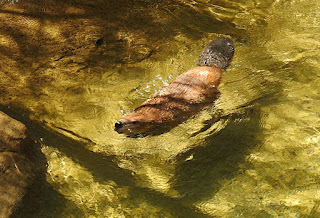Davis-Monthan AFB is the home of a fantastic museum and
AMARG, Aerospace Maintenance and Regeneration Group. It’s as big as Wright-Pat and there is so
much to see and learn it’s nearly overwhelming.
 |
| SR-71 drone, a failed concept |
We didn’t know that the Blackbird had a drone designed to
ride on its back. When they took it up
to deploy it, the aircraft went unstable, it crashed and the co-pilot was
killed.
Marian Rice Hart was the original Wonder Woman. Born in 1891, she obtained a degree in
chemical engineering and a masters in geology.
She and her sister, Dorothy, had a passion for sailing and did long
voyages over oceans, Marian sailing around the world in 3 years in a small
ketch when she was 45 years old. Sailing
wasn’t enough, though, and when she was 54, she learned to fly. That wasn’t enough, either. She made 7 solo flights across the Atlantic,
her first at the age of 70. In all, she
logged 5,000 hours of flying time and on her final flight, she had a bit of a
rough landing and was very unhappy with her performance. She climbed out of the airplane, walked away
and tore up her pilot’s license and said, “That’s it, I quit.” She was 87.
 |
Marian Rice Hart's pilot dress.
Her Beechcraft Bonanza is in the background. |
She also invented a pilot dress for women (and I guess men, too?),
because she liked to wear dresses. It had
lots of pockets for maps, gauges, logs and so forth. She lived to be 98 years old and wrote
several books on how to navigate. Her
Beechcraft Bonanza is on display at Davis-Monthan Museum.
There are several hangars where some of the beauties are
lovingly pampered and a big yard where others are kept. In the yard, Rob found a rare (All but 5 were
scrapped.) B-36, built by Convair and entered into service in 1948. It has ten engines, three push-props and two
jet engines per wing. (You never know
when you’ll need ten engines!)
 |
| B-36 Ten engines, count 'em! |
 |
| B-52 Is this a gorgeous picture or what?! |
 |
| 750 lb. general purpose bomb. Got TNT? |
It was
replaced by the B-52. A bomb is on
display near the B-52. The sign says
that this is an “M117 750 lb. general purpose bomb,” and the B-52 could carry
66 of these. (You never know when you’re
going to need a general purpose bomb.)
In one of the hangars is a small General Motors F-4F Wildcat, almost
intact. It has fold-up wings and was
used as a trainer for pilots learning to land on carriers. The carriers were old cargo ships that were
shaved off flat to create flight decks.
All of this took place on the Great Lakes. This particular F-4 was found at the bottom
of Lake Michigan and brought up 55 years after it crashed in 1945. The pilot climbed out and survived. There are dozens of others on the bottom of
the lakes and they are left undisturbed. The honored final resting places of
the pilots who are still inside.
 |
| F-4F pulled up off the floor of Lake Michigan |
 |
| Meanwhile, back to the present! Our baby flew overhead! |
At 2PM, we boarded a bus that took us through the
“boneyard,” now called AMARG. Some of
the airplanes are not “scrap,” and so they don’t say, “boneyard,” anymore. The word “regeneration” was added to the
acronym. We had to drive through the
active base to get to the storage fields and the security was tight. It took our busload an hour to clear
security. We were told not to take any
pictures and apparently they were watching.
When we were allowed to re-board the bus to go on the tour, we sat for a
long time. Why the delay? Finally, two Air Force guys boarded the bus
and walked over to an Asian guy who didn’t speak English and asked if he had
taken a picture. He said, “no.” They said, “Yes you did, we saw it on the
tape.” They made him delete it and then
we were free to go. (They should have
taken his chip if they were serious but what do I know?)
The “boneyard” is a sea of wings and tails, an airplane
cemetery as far as the eye can see. Why
Tucson, you ask? Under the dirt is a
clay-like sub-layer called caliche. It
is very hard and it is not necessary to construct concrete pads upon which to
park the aircraft. They say if you want
to plant flowers in Tucson, you blow a hole in the soil with a stick of
dynamite. There are 4,000 aircraft
languishing here and it made me feel infinitely blue. They told us that the value of the aircraft
is almost $34 billion dollars (much more in today’s dollars) and most will
never fly again. After an amazing 2-hour
tour, we were driven back to the museum.
 |
Stealth 117 fighter-bomber (Who said
Air Force guys don't have a sense
of humor?) |
 |
| A sea of airfoils..... |
 |
| going on forever..... |
 |
Unhappy retired American muscle ("Somebody
please fly me! I'm ready to kick
some ass!") |
 |
| Extended wing B57 used by NASA |
 |
| Boeing built YC14 |
 |
Retired Thunderbird, F-4 (note the shirt
on Lindy) |
Tonight, we’ll watch the Packers beat the Bears at a sports
bar. Tomorrow, we move along to
Wickenburg.




















































